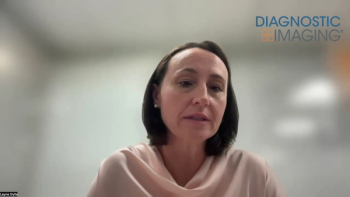
- Diagnostic Imaging Vol 32 No 4
- Volume 32
- Issue 4
Modifying technique cuts radiation dose for CTA
Reduced or no “padding” during ECG-triggered coronary CT angiography results in a substantial reduction in radiation dose without affecting image quality and interpretability, according to a study in the April American Journal of Roentgenology.
Reduced or no “padding” during ECG-triggered coronary CT angiography results in a substantial reduction in radiation dose without affecting image quality and interpretability, according to a study in the April American Journal of Roentgenology.
The study included 886 patients who underwent ECG-triggered coronary CTA with a padding duration of 0, 1 to 99, or 100 to 150 msec. Padding refers to the extra time added before and after the minimum time CTA must be on during each heartbeat.
Increased padding was associated with a greater radiation dose: a 45% increase per 100-msec increase in padding. No difference in image interpretability between padded and unpadded images was seen at the three sites: Weill Cornell Medical College in New York; Fairfax Radiology Associates in Fairfax, VA; and the University of British Columbia in Vancouver, BC.
Articles in this issue
over 15 years ago
Philips' first quarter offers hope for better imaging marketplaceover 15 years ago
MR spectroscopy readies role as cancer diagnosis, treatment toolover 15 years ago
What's old is new again, and the world rolls onover 15 years ago
Three decades take MRI from cutting edge to sustainabilityover 15 years ago
Mobile image display pioneer blazes regulatory path at FDAover 15 years ago
Dose-saving technologies proliferate throughout CTover 15 years ago
CT found effective for Dx lung collapse in womenover 15 years ago
Abdominal plaque reveals coronary artery diseaseover 15 years ago
ACR launches breast MR accreditation programover 15 years ago
MR finds contralateral breast cancer in eldersNewsletter
Stay at the forefront of radiology with the Diagnostic Imaging newsletter, delivering the latest news, clinical insights, and imaging advancements for today’s radiologists.




























